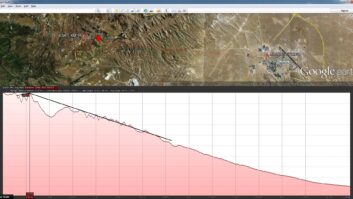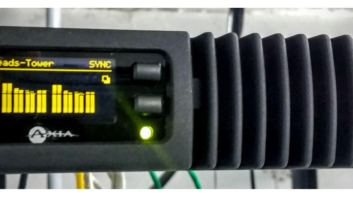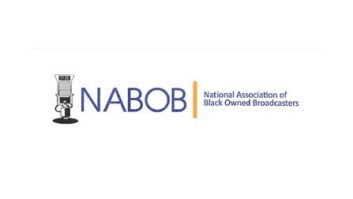I took over as chief engineer at WURD(AM) in Philadelphia about a year ago. The RF plant was in almost perfect shape; yet in going through the records, I found that the station had gone off air a lot in the previous few years, for up to days at a time. The problems seemed to be with the STL, a 15 kHz analog line leased from the local ILEC, Verizon.
Over the years, the station had tried many things to keep it working, including building new premise phone cables into the transmitter building (twice). The problem with the phone lines was not just with the program circuit; the IDSN, DSL Internet and POTS lines also had failed frequently.
Within a week of my arrival a microburst came through the transmitter site, knocking down two phone poles and breaking the 50-pair cable through which everything ran. We were on the air for over a week with a 500-foot piece of Cat-5 cable run through the parking lot (we are located in Philly’s reconditioning site for Hertz rental cars), and spliced into the broken cable.

Even after this was fixed the program circuit would still go out or become distorted. This was happening every few weeks. Verizon would exercise a card, power something down and so forth, and the problem would clear — for another few weeks.
My first idea was to try to get the ISDN line fixed so I could have a better backup than dialing into the transmitter on a POTS line and putting that on the air. After a month it became apparent this was not a viable option. The ISDN line would be fixed, only to die the next day or week.
Next I had Verizon lower the DSL to the slowest possible speed (1000/384) because the DSL modem spent much of its time re-syncing. This improved things well enough that I could install a set of Barix boxes to serve as backup to the program line — and I’ll freely admit that we spent a lot of time running on them.
I set them up as a mono 32 kHz stream of about 64 kbps. It didn’t sound quite as good as the analog line (when it was working, that is) but certainly sounded better then a POTS dialup.
Unfortunately, the DSL would still re-sync, punching 30-second holes in the on-air audio every few hours while the Barixes were in use. By heavily RF suppressing everything (including putting the modem itself in a shielded box and running shielded Cat-5 everywhere), I was able to reduce the re-syncing to once or twice a day. Better, but still not perfect.
From here to there, times two
My boss called me into his office after one outage and said: “Can’t we bounce our stream off another tower, MacGyver?”
Stream? Tower? Where had I heard something like that before?
Towerstream had called me a few times marketing its wireless T1 service. The company uses licensed WiMax spectrum it owns, so there is no chance of interference from other users. Since we already had Internet from two other providers, Comcast Business Class cable and Cavalier DSL, I’d not had any real interest.
But at one point Towerstream had told me that its Philadelphia point of presence was atop One Liberty Plaza downtown and that they had a gigabit Internet connection there. They also used “segmented” radios, meaning that instead of a single onmidirectional system shared by everyone, they had several directional panels mounted around the perimeter of the building.
I thought to myself: If this is their POP, what if I bought two connections from them — one to my studio and a second to the transmitter — and hooked a pair of Barix boxes to them so that the stream would stay strictly on their network? A call to Towerstream confirmed this was possible and that the only thing wired between the two radios would be a switch.
The brain wheels began turning; but then the costs began dampening the movement. The two circuits would cost $598 a month total. Fortunately, Towerstream was open to negotiation and agreed to match its monthly rate to what we were paying Verizon for its program line, $464 a month.
Installation would also be free if we were willing to enter into a three-year agreement. This caused some concern. What if we were to move to another studio location? The company replied that in the event we decided later to move studios, it would overbuild service to any new studio location for free.
We signed and faxed the contract. Within a couple hours they called to schedule the installations. Both ends were done in three days.
They installed a one-foot-square antenna (plate) atop the studio roof and a two-foot plate on a pole at the single-story transmitter building. Both have excellent line of sight to One Liberty. Both showed speeds in excess of 1650 both up and down, more than the 1544 a standard T1 has.
Then a problem: RF was getting into their radio at the transmitter.

First, I tried tying their support pole and radio (which is mounted to the back of the antenna) into our station ground. This improved things but did not eliminate the RF. I called Towerstream and they sent out the installer within a day; he realized that he had forgotten to ground the shield on the Cat-5 cable that ran between the antenna and the power injector in the building. This eliminated the RF (the cable runs within five feet of one of our two AM towers).
With everything running OK, I acquired two Barix Annuncicoms and installed the latest IP intercom firmware on them. This gives me a mono 24 kHz sampled bidirectional PCM audio link (384 kbps) that is completely wireless. Even better, since we’re not using any Internet bandwidth, we discovered that we still have the full T1 Internet bandwidth available to us at both ends — an unexpected bonus.
Audio performance
The sound is, in two words, just amazing. It runs rings over what we got with the program circuit.
The bass sounds transformed; it is nice and tight, with a solid quality. The rubbery bass of the program line sounded vastly inferior. The midrange is nice and smooth without being edgy. The high end is sparkly clean.
Finally, noise level is nonexistent. I measured the on-air noise at better than –65 dB down, and this is on an AM station. AM radio does not completely show the huge difference between the program line and the PCM link, but a good headphone amplifier and headphones do. It is truly night and day. That said, even non-trained ears could hear the improvement on air.
We used the return link (the Annuncicom provides a two-way circuit) to feed our modulation monitor back to the studio. Latency is about 50 milliseconds, which is fine because WURD is always on delay.
The STL has now been in use for three months with nary a glitch. It just sits and runs, sounding great. Recent measurements show the line to have ruler-flat frequency response from 15 Hz through 12 kHz (better then half a dB flatness), distortion below 0.08 percent (noise limited) and noise better than 70 dB below our operating level (which is 12 dB below clipping).
Dana Puopolo is chief engineer at WURD(AM) in Philadelphia and has been involved in major-market radio and TV engineering for 30 years, including building and operating his own 100,000-watt FM station.
Radio World welcomes reader stories about solutions to technical problems. Write to [email protected].












